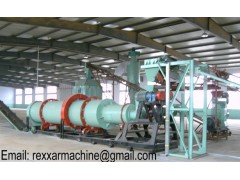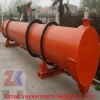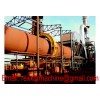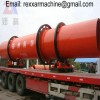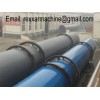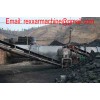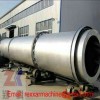There are several variations of biomass dryer, but the most widely-used is the directly heated single-pass biomass dryer. In this type of dryer, hot gases are contacted with biomass material inside a rotating drum. The rotation of drum lifts solids in biomass dryer, so they can tumble through the hot gas, promoting better mass and heat transfer. If contamination is not a concern, hot flue gas can be fled directly into the air. Or, it has to be processed by cyclone dust collector.
The biomass and hot air normally flow co-currently through biomass dryer so the hottest gases come in contact with wettest materials. But for materials where temperature is not a concern, the flue gas and materials flow in opposite directions, so the driest materials are exposed to the hottest gases with the lowest moisture.
Indirectly heated biomass dryer uses a heat source-steam or hot air-passing through the outer wall of biomass dryer or through an inner central shaft to heat biomass dryer by conduction. In this way, a high flue gas temperature can be used for heating while reducing the fire risk by limiting the temperature of the gas in direct contact with the biomass.

